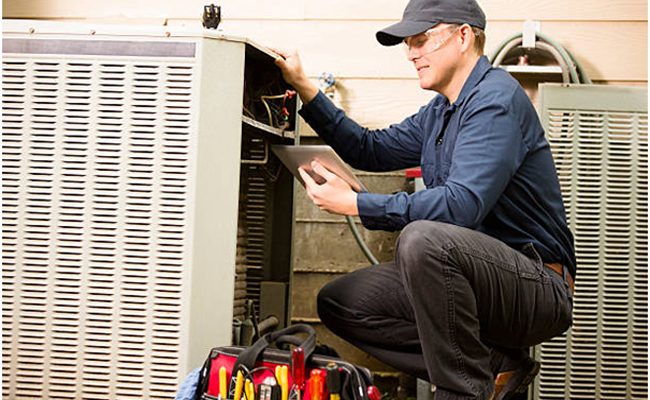
Humidity is an important factor in maintaining a comfortable and healthy environment in buildings. High levels of humidity can cause physical discomfort, damage to materials and structures, and even health problems in certain cases. Heating, Ventilation, and Air Conditioning (HVAC) systems play a major role in managing humidity levels within buildings. Properly designed HVAC systems are able to maintain the optimal relative humidity level while providing a comfortable indoor climate.
Humidity’s Role in Buildings
Humidity plays an important role in buildings, especially when it comes to HVAC systems. When the humidity is too high, it can create a breeding ground for mold and other bacteria, leading to health risks for occupants of the building. In addition, high levels of humidity can cause condensation on windows and surfaces that can lead to decay and damage over time. On the other hand, if the humidity is too low then occupants of buildings can experience dryness in their skin or eyes which leads to discomfort.
HVAC systems are responsible for controlling indoor humidity levels in buildings. They use humidification and dehumidification processes where necessary to keep indoor humidity at safe levels between 40-60%. Properly functioning HVAC systems must be able to detect changes in outdoor temperature or weather events such as rainstorms quickly so they can switch from heating mode to cooling mode with minimal disruption.
Maintaining Proper Humidity Levels with HVAC
Humidity levels can have a major impact on how comfortable a building feels. Too much humidity can lead to mold and mildew growth, while too little humidity may cause irritation to the skin and eyes. HVAC systems are designed to reduce the risk of these issues by controlling the temperature and humidity inside a space. An ideal relative humidity level for indoor spaces is usually around 40-60%.
HVAC systems use cooling or heating coils, as well as fans, humidifiers and dehumidifiers to regulate the temperature and moisture in a building. The air is drawn into the system through filters that remove contaminants such as dust, pollen, bacteria, viruses, etc. The air is then passed over cooling or heating coils depending on the season before being distributed throughout the building through ductwork or vents. Additionally, humidifiers and dehumidifiers can be used to adjust the relative humidity in order to maintain optimal comfort levels in your space.
The key to the proper maintenance of HVAC systems lies in the regular use of quality filters for maximum efficiency; this will ensure that your system is working at its best capacity when it comes to keeping your home’s climate under control. Additionally, it’s important to check on any parts that could potentially need replacing such as air filter pads or fan belts; if these components are not functioning properly they could affect your overall performance and comfort levels within your home environment.
Benefits of Keeping Proper Humidity
Proper humidity levels in buildings are essential for providing a safe and comfortable environment. An HVAC system can be used to efficiently regulate the humidity, which helps to reduce energy costs, maintain comfort levels, and prevent damage to furniture and other items.
The first benefit of maintaining proper humidity levels is that it helps reduce energy costs. When an HVAC system is set up to keep the indoor air at the right level of humidity, it requires less energy as it does not need to work harder than necessary. This not only saves on electricity bills but also reduces strain on the system itself, prolonging its life span. Additionally, lower humidity means lower temperatures since water absorbs heat more quickly than air with low relative humidity. This leads to improved thermal comfort when combined with good airflow from ventilation systems or fans.
Another advantage of keeping the right amount of moisture in a building is that it reduces risks associated with mold growth and mildew formation which can occur if there’s too much moisture present in a room for extended periods of time. It also prevents wood furnishings from warping due to excessive dryness or shrinking due to excess moisture. In addition, controlling indoor air quality through proper ventilation systems can help eliminate dust mites and other allergens from circulating throughout a home or office space by reducing breeding grounds inside walls and fixtures where high-humidity conditions exist.
Conclusion
HVAC is crucial for maintaining the proper humidity levels in buildings. It maintains the temperature and humidity of a room to prevent mold growth, condensation, and structural damage due to moisture accumulation. The system works by extracting moist air from the inside and replacing it with dry air from the outside. This helps regulate indoor humidity levels, which prevents health problems like respiratory illnesses caused by high levels of moisture. Furthermore, HVAC systems can also be used to reduce energy costs as they help keep cold air out during summer months and warm air out during winter months.
In addition to its role in controlling indoor humidity levels, HVAC is also important for increasing the comfort level of occupants in a building. Properly designed HVAC systems ensure that temperatures remain within an acceptable range regardless of external climatic conditions or occupancy density – thus providing comfort to occupants while reducing energy consumption. Finally, properly functioning HVAC systems are essential for preventing airborne contaminants from entering interior spaces and causing harm to occupants’ health. With all these benefits combined, it’s easy to see why having an efficient and effective HVAC system is so important for any building owner or operator.
Leave a Reply